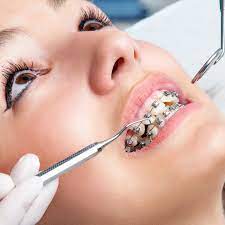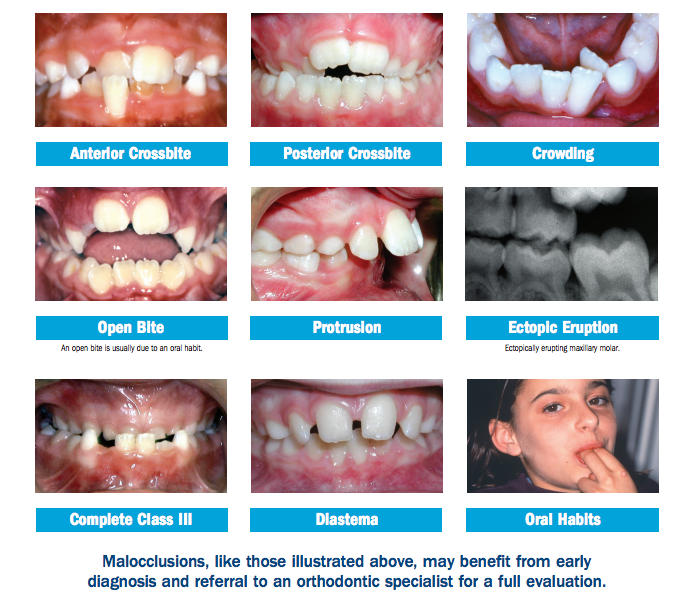The 30-Second Trick For Causey Orthodontics
Wiki Article
Fascination About Causey Orthodontics
Table of ContentsCausey Orthodontics - The FactsCausey Orthodontics Fundamentals ExplainedThe smart Trick of Causey Orthodontics That Nobody is Talking AboutCausey Orthodontics - QuestionsCausey Orthodontics for Dummies
Ignoring occlusal relationships, it was common to get rid of teeth for a range of dental issues, such as malalignment or congestion. The idea of an intact teeth was not widely valued in those days, making bite relationships seem unimportant. In the late 1800s, the principle of occlusion was necessary for creating reliable prosthetic substitute teeth.As these concepts of prosthetic occlusion advanced, it became an important device for dentistry. It remained in 1890 that the job and effect of Dr. Edwards H. Angle started to be felt, with his payment to contemporary orthodontics particularly notable. Initially concentrated on prosthodontics, he taught in Pennsylvania and Minnesota prior to directing his interest towards dental occlusion and the therapies required to preserve it as a regular condition, hence becoming recognized as the "father of modern-day orthodontics".

The concept of optimal occlusion, as proposed by Angle and included right into a classification system, allowed a shift towards treating malocclusion, which is any type of variance from regular occlusion. Having a complete set of teeth on both arcs was very demanded in orthodontic treatment as a result of the requirement for precise relationships in between them.
The Of Causey Orthodontics
As occlusion came to be the essential top priority, facial percentages and aesthetic appeals were neglected - best orthodontist near me. To attain ideal occlusals without utilizing external forces, Angle proposed that having perfect occlusion was the finest means to acquire maximum facial appearances. With the passing of time, it ended up being fairly obvious that also a remarkable occlusion was not ideal when thought about from an aesthetic perspectiveCharles Tweed in America and Raymond Begg in Australia (that both studied under Angle) re-introduced dentistry extraction into orthodontics throughout the 1940s and 1950s so they might enhance face esthetics while also making sure much better security concerning occlusal connections. In the postwar period, cephalometric radiography started to be utilized by orthodontists for measuring modifications in tooth and jaw setting brought on by growth and treatment. It came to be noticeable that orthodontic treatment can readjust mandibular growth, leading to the development of useful jaw orthopedics in Europe and extraoral pressure procedures in the United States. These days, both functional home appliances and extraoral gadgets are applied around the world with the purpose of amending growth patterns and forms. Consequently, pursuing true, or at the very least boosted, jaw relationships had come to be the main objective of treatment by the mid-20th century.
The smart Trick of Causey Orthodontics That Nobody is Discussing
 Up until the mid-1970s, braces were made by wrapping steel around each tooth. http://listingsceo.com/directory/listingdisplay.aspx?lid=69459., it ended up being feasible to rather bond metal brackets to the teeth.
Up until the mid-1970s, braces were made by wrapping steel around each tooth. http://listingsceo.com/directory/listingdisplay.aspx?lid=69459., it ended up being feasible to rather bond metal brackets to the teeth.Andrews provided an informative definition of the optimal occlusion in irreversible teeth. This has had significant impacts on orthodontic therapies that are administered frequently, and these are: 1. Right interarchal partnerships 2. Proper crown angulation (tip) 3. Correct crown inclination (torque) 4. No rotations 5. Limited call factors 6. Flat Curve of Spee (0.02.5 mm), and based on these principles, he found a therapy system called the straight-wire home appliance system, or the pre-adjusted edgewise system.
The benefit of the layout depends on its brace and archwire mix, which requires only minimal wire bending from the orthodontist or clinician (Causey Orthodontics). It's aptly named after this feature: the angle of the slot and thickness of the bracket base inevitably determine where each tooth is situated with little demand for additional adjustment
Unknown Facts About Causey Orthodontics
Both of these systems used the same braces for every tooth and necessitated the flexing of an archwire in 3 airplanes for situating teeth in their preferred placements, with these bends dictating best placements. When it involves orthodontic appliances, they are separated into two types: removable and dealt with. Removable devices can be taken on and off by the person as required.
Thus, nearly all modern set devices can be thought about variations on this edgewise appliance system. Early 20th-century orthodontist Edward Angle made a major payment to the globe of dental care. He developed four distinct home appliance systems that have actually been used as the basis for numerous orthodontic therapies today, disallowing a couple of exceptions.
Excitement About Causey Orthodontics

The cable finished in a thread, and to relocate it onward, a flexible nut was used, which enabled an increase in circumference. By ligation, each private tooth was connected to this expansive archwire (family orthodontics). Due to its limited series of activity, Angle was incapable to accomplish exact tooth positioning with an E-arch
These tubes held a soldered pin, which could be repositioned at each appointment in order to move them in location. Dubbed the "bone-growing home appliance", this gizmo was thought to motivate much healthier bone development due to its potential for transferring pressure straight to the roots. Implementing it verified bothersome in fact.
Report this wiki page